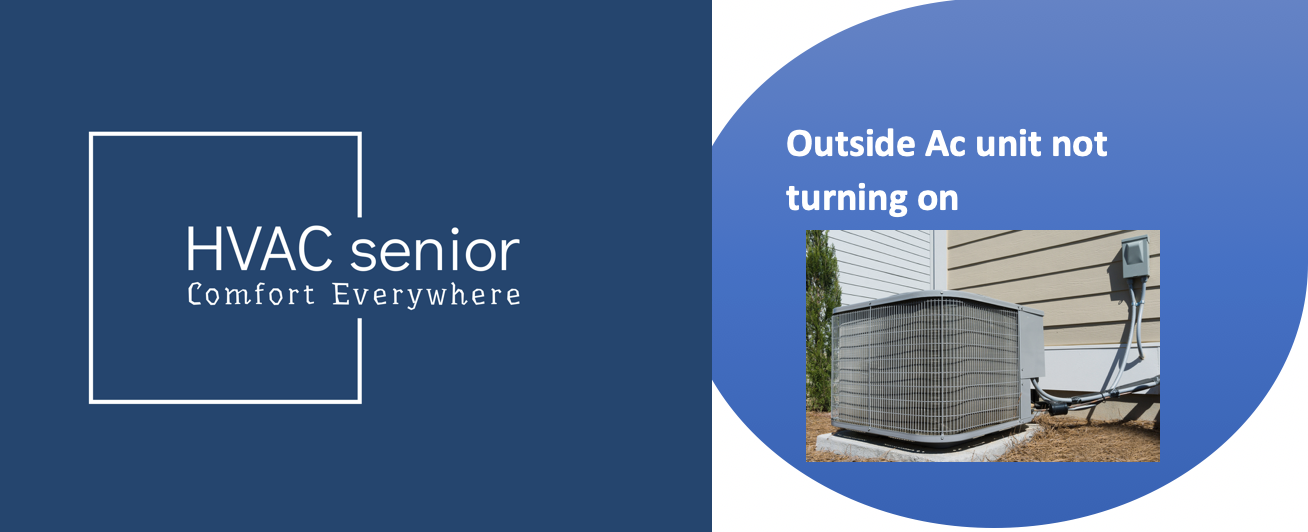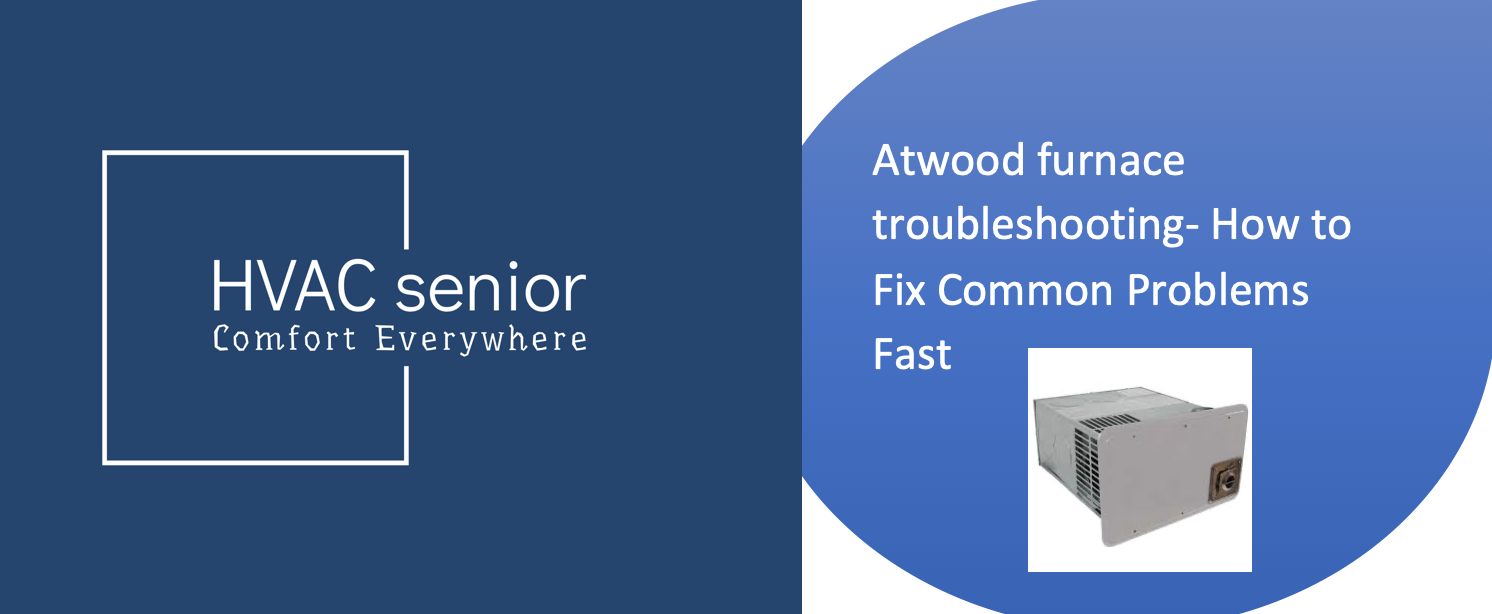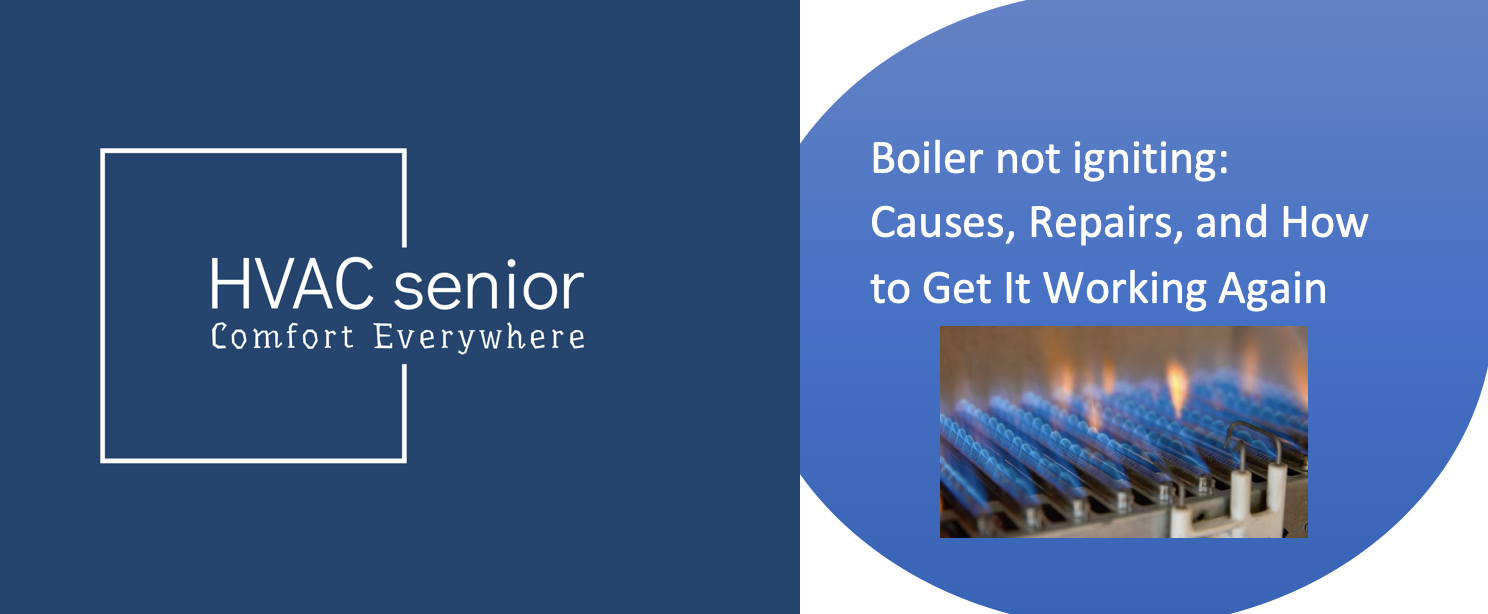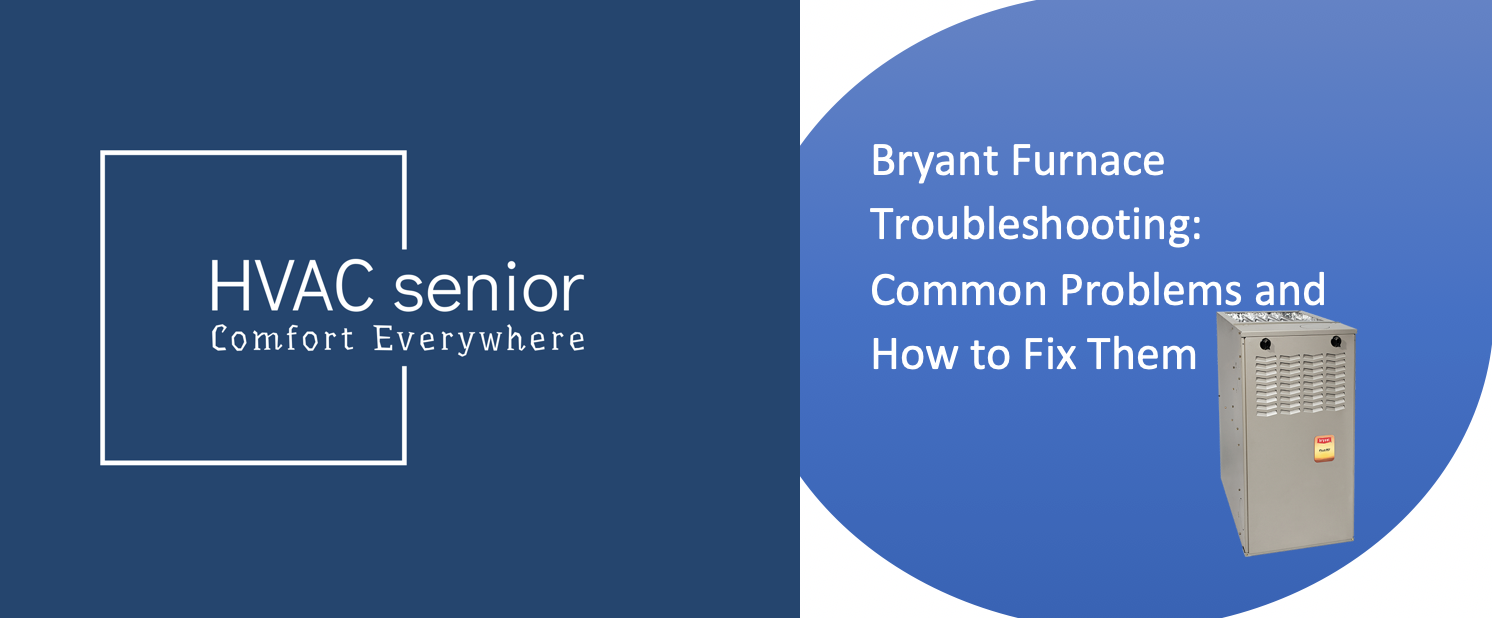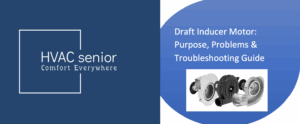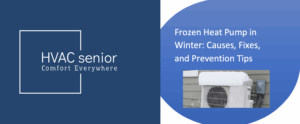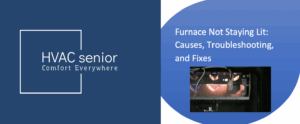When your Outside Ac unit not turning on: Common Causes & Fixes, it’s frustrating — but it’s also a sign that something in your cooling system isn’t working properly. The indoor unit might be running and blowing hot air, but if the outdoor condenser is quiet, your AC can’t cool your home effectively.
If you’re asking, “Why is my AC not turning on outside?”, you’ve come to the right place. In this guide, we’ll explain why your outdoor unit isn’t starting, how to diagnose the cause, and the best step-by-step fixes — all in simple terms.
How the Outside Unit Works
Your air conditioner has two main parts:
- The indoor unit (evaporator), which absorbs heat from your home’s air.
- The condenser, the outdoor unit that vents that heat outside.
The compressor, condenser fan, and capacitor are located in the outdoor unit. When your AC is on, your indoor thermostat sends a signal to the outdoor unit. If the condenser does not turn on, the cooling process fails mid-run — creating warm air from your vents.
Top Reasons the outside ac unit not turning on
Let’s go through the most common causes this issue arises and how to diagnose each one safely.
1. Power Supply Issues
Problem: The most prevalent cause an outside unit of an air conditioner will not turn on is a power issue. Either the circuit breaker has tripped or a disconnect switch near the outdoor unit is turned off.
What to Check:
- Go to your electrical panel and locate the AC breaker.
- If it’s tripped, turn it off and back on.
- Verify the disconnect box beside your outdoor unit (which ought to be mounted on the wall). Make sure the switch or pull-out block is connected and switched to the ON position.
Repair:
If the breaker keeps tripping, there might be a short circuit, rotten capacitor, or bad compressor. Don’t continue to reset it — have a pro inspect the wires.
2. Thermostat Problems
Problem: A malfunctioning thermostat will prevent your outside AC unit from getting the “start” signal.
What to Check:
Ensure your thermostat is in “cool” and the setting is below room temperature.
Replace thermostat batteries, if needed.
If your thermostat display is blank, it might not be sending signals at all.
Fix:
Reset your thermostat. If your system still does not respond, replace or re-calibrate the thermostat.
3. Blown Fuse or Tripped Contactor
Problem: The contactor is a small outdoor unit switch that engages the compressor and fan when the unit cools. If the contactor fails or the fuse blows, the unit will not turn on.
What to Check:
- Open the disconnect box and look for a fuse holder.
- Check for continuity of the fuses with a multimeter.
Repair:
If a fuse is blown, replace it with one of the same rating. If you’re not comfortable with electrical work, have an HVAC technician handle it — safety first.
4. Faulty Capacitor
Problem: The start capacitor gives your compressor and fan motor the jolt of energy needed to start up. Over time, capacitors degrade or burst, preventing your outside unit from turning on.
Signs of a Bad Capacitor:
- Humming noise from the outdoor unit
- Fan not spinning even though power is reaching the unit
- Bulged or leaking capacitor
Fix:
Capacitor replacement is inexpensive and quick for a technician. It’s not recommended for DIY unless you’re trained — capacitors can store dangerous electrical charge.
5. Compressor Failure
Problem: The compressor is the heart of your air conditioning system. If it fails, your outdoor unit won’t run — or it may hum but not start.
Causes of Compressor Failure:
- Overheating
- Low refrigerant
- Dirty condenser coils
- Electrical surges
Fix:
If your compressor has failed completely, you’ll likely need to replace it. In older units, it might be more cost-effective to replace the entire outdoor unit instead of just the compressor.
6. Contactor or Relay Failure
Problem: The contactor relay is responsible for switching power on to the compressor and fan motor. When it burns out or sticks open, the unit won’t power up.
Fix:
Technicians tend to test the contactor for voltage and continuity. A failed contactor is simple to replace — it’s a small part, but the system won’t operate without it.
7. Low Refrigerant or Pressure Switch Trip
Problem: Low refrigerant level can trip the low-pressure switch, shutting off the compressor to prevent damage.
What to Test:
- Warm air blowing through vents
- Ice building up on the refrigerant lines or coils
- Hissing sounds close to the outside unit
Repair
Only a trained HVAC technician can recharge refrigerant (Freon) and inspect it properly. If leak, seal before recharging.
8. Dirty Condenser Coils
Problem: If coils become clogged with dust, leaves, or debris, heat cannot radiate properly, and the system overheats and shuts off.
Solution:
- Turn unit power off.
- Blow away debris and clean coils gently with a garden hose or coil cleaner.
- Don’t apply high pressure — it will distort the delicate fins.
- Bimonthly or yearly cleaning can prevent most cooling issues.
9. Blown Fan Motor
Problem: The outdoor unit’s fan motor helps release heat. If it blows, your unit is unable to cool and won’t even start up.
Symptoms:
- Fan won’t turn
- Humming sound
- Unit starts and then cuts out
Repair:
If the motor is burnt, replacement would be the only solution. It is also possible to check the capacitor and wires before confirming motor failure.
10. Dirty Air Filter or Blocked Airflow
Problem: Restricted airflow within the system can cause pressure imbalances, which make the outdoor unit shut down for protection.
Repair:
Check indoor air filters and replace them when dirty. Make sure that vents and registers are open and free too.
Step-by-Step Quick Fix Checklist
Before contacting an HVAC professional, try these safe diagnostic steps:
- Make sure thermostat is set to “cool” and working.
- Check circuit breaker and outdoor disconnect switch.
- Change thermostat batteries if necessary.
- Check outdoor unit for obstructions and clean it.
- Verify fan blades spin freely (no blockages).
- Reset your AC by turning power off for 5 minutes, then resume.
Also read: No Condensation from AC
If none of these work, it’s time to call a pro.
When to Call a Professional
Call a trained HVAC professional if:
- The breaker keeps tripping after reset.
- Humming sound but no fan operation.
- Suspected refrigerant leakage.
- There is burning smell from the outdoor unit.
A trained professional can inspect items like the capacitor, contactor, fan motor, and compressor with the right tools and safely address refrigerant or wiring problems.
How to Prevent This Problem in the Future
Periodic service can keep your outdoor AC unit running at peak efficiency and prevent unexpected breakdowns.
Maintenance Tips:
- Schedule bi-annual HVAC maintenance (before summer).
- Provide at least 2 feet of clear space around the outdoor unit.
- Replace or clean air filters every 1–2 months.
- Clean condenser coils regularly.
- Check thermostat settings before each cooling season.
Preventive maintenance not only ensures continuous cooling but also extends your system’s lifespan and reduces energy expenses.
FAQ:
1. Why won’t my outside AC unit turn on but the inside unit does?
Possible reasons include a tripped circuit breaker, blown fuse, faulty capacitor, or thermostat issue. The exterior condenser needs power and signal from the thermostat to run.
2. What does it mean when my AC unit hums but will not start?
Usually, that means the fan motor or capacitor has burned out. The humming is the compressor trying to start.
3. Will dirty coils keep my AC from starting?
Yes — dirty coils overheat and can cause safety switches to prevent startup.
4. Do I need to reset my AC unit?
Yes, occasionally a reboot will work. Turn power off to the system at the breaker for 5 minutes and then bring it back online.
5. How much does it cost to fix an outside AC unit won’t turn on?
Rates vary: capacitor replacement (~$150–$250), contactor (~$200), fan motor (~$400–$700), or compressor (~$1,000+). Preventive maintenance can prevent these expensive repairs.
Final Thoughts
If your air conditioner’s outside unit won’t turn on, don’t freak out. More than likely, the problem is simple — such as a tripped breaker, faulty capacitor, or thermostat setting. However, neglecting the issue can result in more expensive repairs down the road.
Do a rapid visual inspection and basic checks, and in case of failure, call a qualified HVAC technician. Regular care and timely diagnosis will keep your cooling system functioning effectively and efficiently, even at the height of summer.



